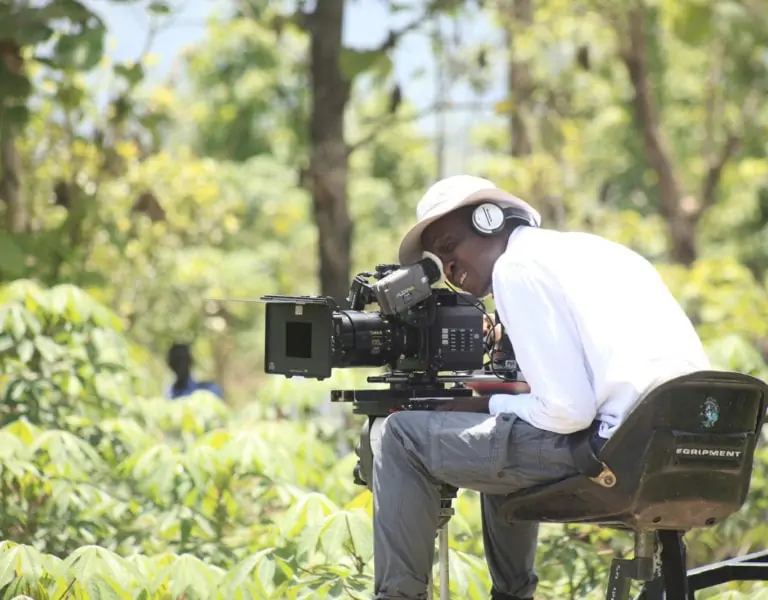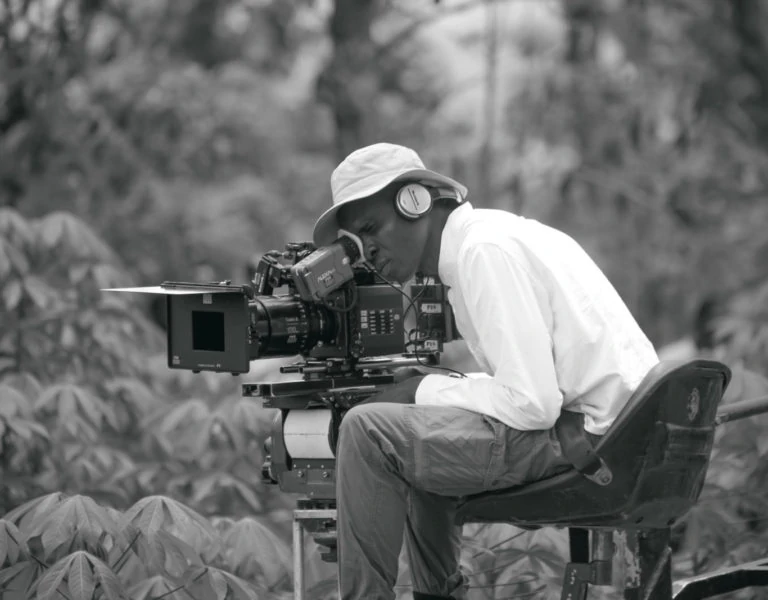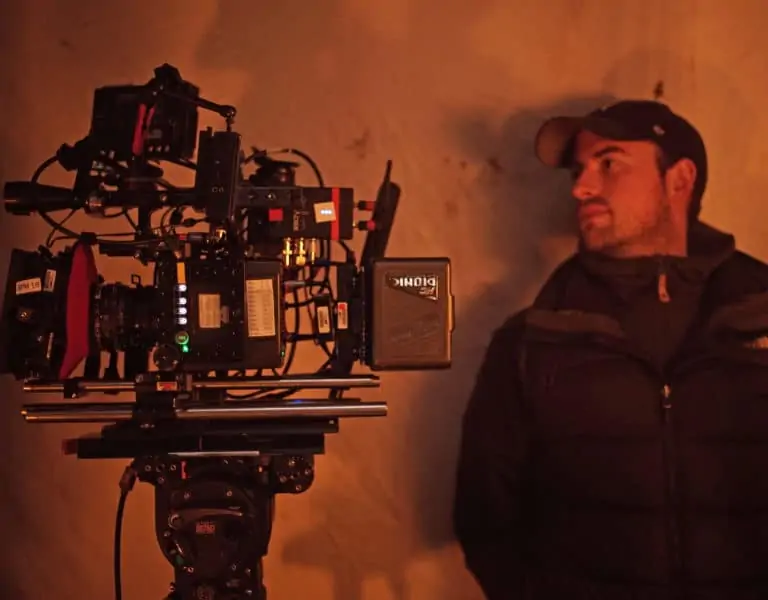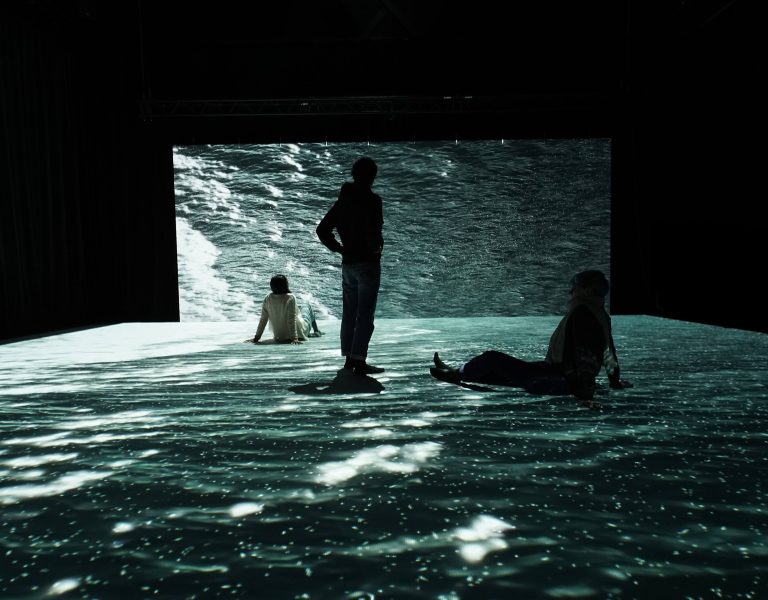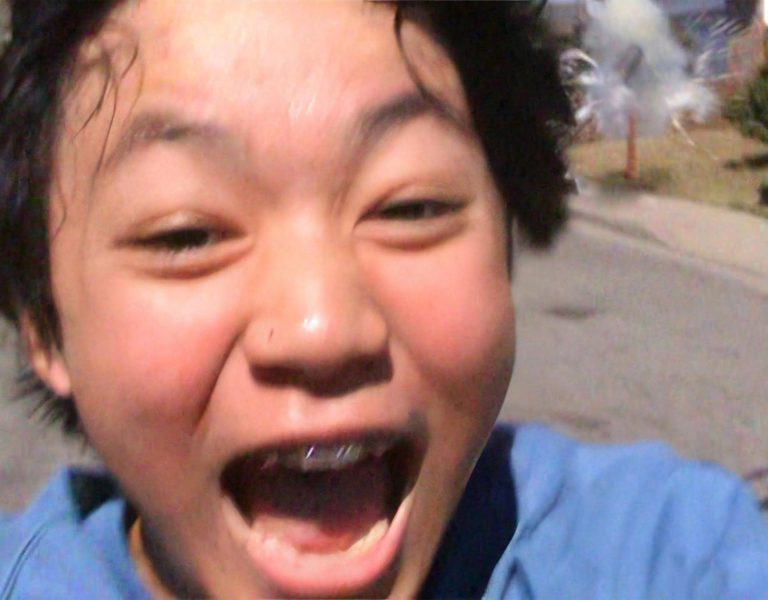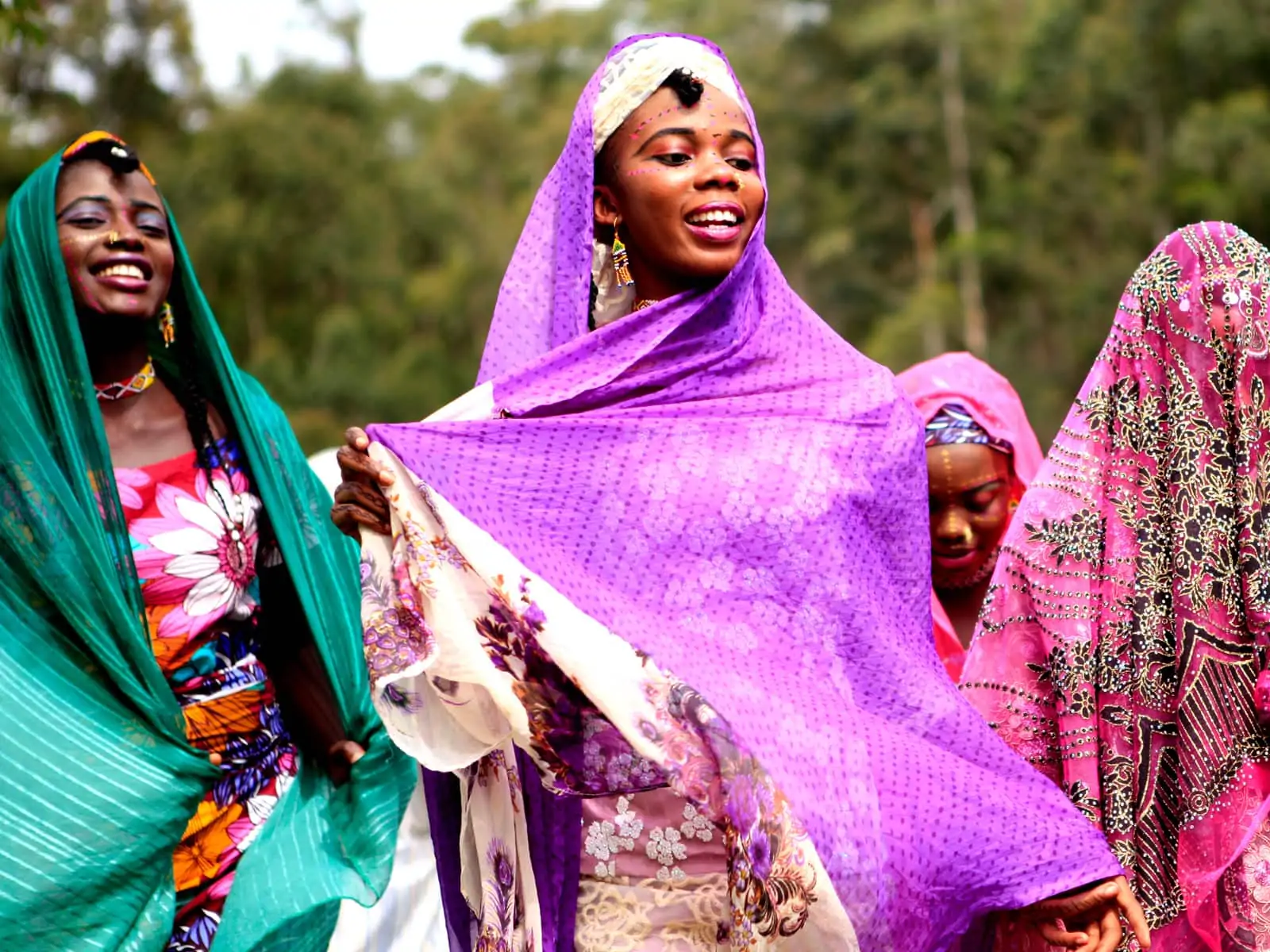
An unflinching exploration of the human cost of the religious extremism sweeping across the African continent like a virus, The Milkmaid tells the story of two sisters, Aisha and Zainab, who are abducted from their village on Zainab’s wedding day in a deadly attack. This traumatic encounter forever alters their path, destroying their relationships and forcing them to fight for their lives, their freedom, and their sanity.
A story about Nigeria, made by Nigerians, Desmond Ovbiagele’s film – told through Hausa, Fulfulde and Arabic – combines stunning cinematography with a powerful script to shine a spotlight on the ordinary people victimised by extremist terrorists, transforming them from another horrifying statistic into real, flesh-and-blood characters with lives, loves, desires, and hopes.
How did you first get involved with the production?
I met the director, Desmond in 2012 when he was shooting another film, Render to Caesar. He had approached me about shooting the film but though I did not, I got to visit the set of the film at some point during its production. Then in 2017, Desmond contacted me about The Milkmaid. When we had an initial meeting, Desmond told me about how the script came about. He was very passionate about wanting to tell this story about Boko Haram and two sisters whose lives were impacted by insurgency. The script had been inspired by a true story and Desmond wanted Nigerians and the whole world to see life through the eyes of someone who had been affected by Boko Haram insurgency so that the viewer could really understand what was going on in that part of the world. So I read the script and really liked it.
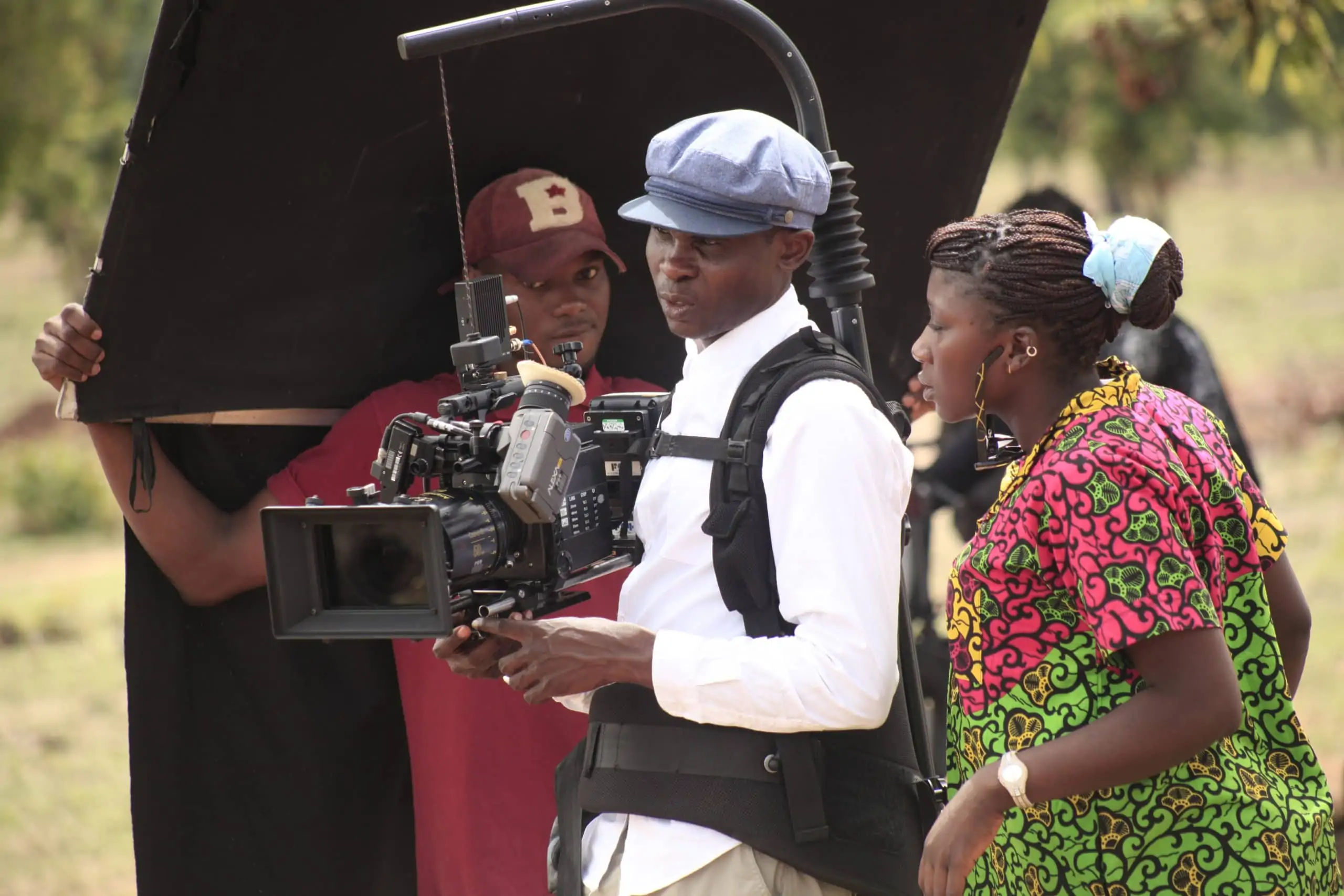
What appealed to you about the story being told?
As much as I see film as a big part of entertainment, I also believe that film can be educational, and it can be used as a very strong agent for change. Boko Haram in Nigeria is a big issue, and for me being a part of this film in a way was an opportunity to help push change by bringing to the open the personal human stories of people who have suffered at the hands of these militants. Plus, I love stories that have the power to evoke strong emotions. There’s a lot of layers and facets of our human existence that I find really remarkable. And when I’m in a privileged position to explore other people’s lives who I may never meet through storytelling, I jump on it.
What made this film stand out from other productions you’ve worked on?
I think the story was the first thing. I had never shot anything on terrorism or militancy before. Also, most of the film was shot in Taraba state and the Mambilla Plateau in that area. The Mambilla Plateau has the highest peak in Nigeria. That was the first time an entire production was shot in that area. And I had visited that area when I was younger, and I had always wanted to shoot there.

Why do you think your collaboration with director Desmond Ovbiagele was so successful? What was his vision and how did you help realise that? What new perspectives and ideas did you bring to the production?
As a director, Desmond is very calm and calculated because he had written the script and he had thoroughly researched the story, he was very clear about what he wanted to achieve in every scene. Also, I enjoyed working with him because he is very collaborative in his approach to filmmaking. He always listened and was willing to take suggestions and he basically allowed me to do my job. I also felt that there was a huge level of trust Desmond had for me and you know in filmmaking it’s always helpful when a director trusts his DP.
As for me coming on board as a DP, I had first-hand experience of the world where the story was taking place. I grew up in Northern Nigeria, in the city of Jos, and I speak the Hausa language, which the film is shot in. I had grown up with Muslim friends and I had taken trips to the Mambilla Plateau where some of the film takes place. I had also witnessed some of the violent clashes and unrests in Jos in the year 2001. So I was able to bring that first-hand knowledge into the production which I think was really helpful.
What were your initial discussions about the visual approach for the film? What look and mood were you trying to achieve?
During our initial conversation, I realised that Desmond wanted to have a conservative approach to this film. He wanted to be true to the surreal experienceof these sisters, which he had thoroughly researched. I realised that he wanted a film that would allow people to think and hopefully have space to reflect on the terrible and devastating impact of terrorism by extremists in Nigeria.
The impact of insurgency is horrific and devastating enough and he didn’t want to allow those moments to be rushed, however, it was important for him to allow as many people as possible to be part of the experiences of these two sisters. The original script had some bloody and violent scenes in it, but during the production, Desmond scaled back on those. So, I remember him saying to me things like ‘I don’t want to show blood’. And he pulled back on the rape scene in the film, so you don’t see the actual rape but the impact of it on the characters. I think for him he felt that the news was bad enough, so he just wanted to tell the story and that kind of informed how we approached the scenes.

What were your creative references and inspirations? Which productions, photography and paintings were you influenced by?
There were films that formed our earlier conversations, but we were not trying to remake them or reference them in that sense, because Desmond wanted this film to find a life of its own. Some of those films were The Godfather, Timbuktu and Blood Diamond. Desmond is a big fan of The Godfather and he would talk about films not as a reference, but as a premise on how far we could stretch the canvas. He did not shy away from us going really dark if we had to or shaking the camera if we had to. Timbuktu in the early days played a lot more on my mind. Story-wise, Desmond had written the script as a creative imagining of the two iconic Fulani milkmaids depicted on the back of the Nigerian ten naira note and how their lives’ journeys would be impacted under a religious extremism scenario, and this strongly informed our creative decisions across several elements of the film particularly with costumes, make-up and character locations.
Can you run through the filming locations? How much was filmed on location? What sets were constructed? Did any of the locations present any challenges?
We filmed on location in different parts of Taraba State, Nigeria . We shot in the capital city, Jalingo and we also shot on the Mambilla Plateau, which is about 7 hours away from the capital. Taraba has quite a unique and interesting scenery. For example, The Mambilla Plateau, contains a set of highlands with an average elevation of about 1,600 metres above sea level, which makes it the highest plateau in Nigeria. The scenery there is quite lush and green. So we shot part of the opening scene of the film there. We also shot some of the scenes from the sisters’ village community there. Because the scenery of Mambilla Plateau helped to enhance the sense of security and peacefulness and joy that the sisters’ lives were before the attacks on their village.
On the way to Mambilla plateau, just before you begin the ascent up the hills, there is an area called Gashaka where we also filmed. Some of the locations were challenging because we were filming at a time when there was some Boko Haram activity in the area, so we had to be careful security wise which further restricted us to where we could film and where we could not.
Although we used real locations Pat Nebo the production designer whom I have collaborated with on other productions had to build sets to fit our intentions. Given the restrictions of what we had to work with, a little house was found in Jalingo that could only take one set at a time. So that house was used to create about four sets. In that house, Pat Nebo, created the home of the sisters, as well as the meeting room in camp of the terrorists. It was also turned into the bedroom of one of the lead characters as well as a cave where other characters spent some time. So in order to achieve multiple sets in one tiny space, production design would for example take out the bed completely in one set or reposition the bed to change the set. And I would shoot facing a certain direction only. Other times we would, you know, turn around and use the other side of the room with the windows dressed with the bed.
We also created a tent to tent the house completely black. And that helped us to be able to shoot at any time of day. This helped me to control the light sources whether day or night the way I wanted to.
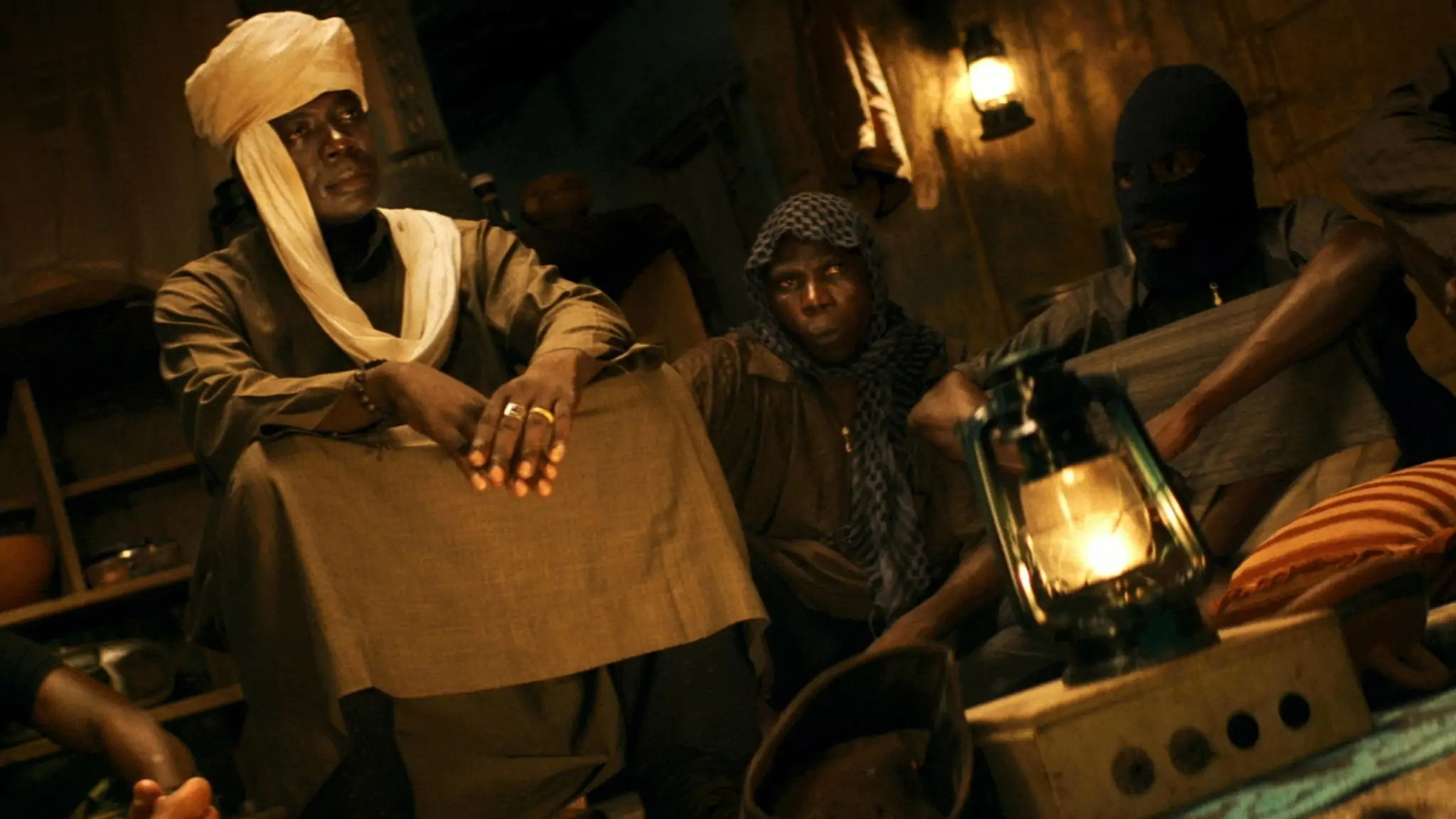
How did you collaborate with the production designer?
The Milkmaid was my eighth collaboration with Pat Nebo the production designer. It is quite easy working him, because we have formed a good working relationship over the years. So we bounce a lot of ideas off of each other. I believe he is one of the most experienced production designers if not the most experienced production designer in Nigeria as we speak. Before I arrived in Nigeria for principal photography Pat had gone ahead to recce key locations. Some of those locations we lost due to security reasons, and we had to come up with alternatives at extremely short notice. Pat built some extraordinary sets in this film – for example, the well that was used to imprison a character in the film he built with fabrics, hanging about 20 feet above the ground. He then attached it to the pit where we had previously shot the mass grave scene. So in the film there is a wide shot with the actors looking down and the ladder being pulled but that’s not the well, it’s just a shallow pit he dug and then we cut to this suspended well and I thought it really worked. The top of the well had a platform where the actors stood. I was on the ground looking upwards with the camera. In that shot the actors were looking down into the well, but in reality they were about 20 feet above the ground. It was phenomenal. The house we used as the insurgent camp interior, he turned it around four times. He also built a cave in a small room.
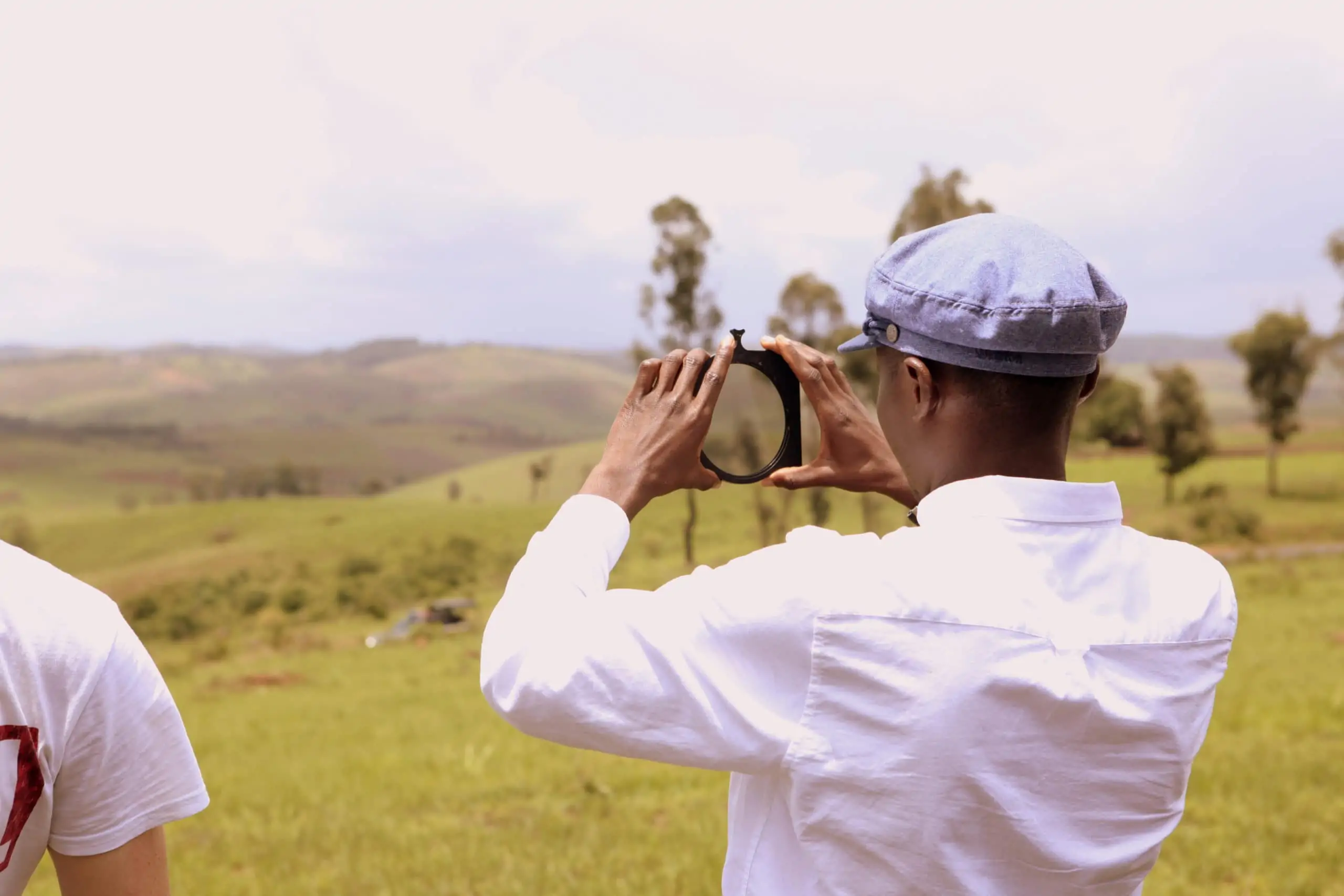
Can you explain your choice of camera and what made it suitable for this production?
I went with the ARRI Alexa Mini because it is a camera I know very well. It’s my default go-to camera. It has got very good latitude, especially in the highlights. So in a country like Nigeria where you would always be up against the sun, ARRI is an ideal choice. I found the Mini very useful also because it allowed us to be compact. Sometimes we had to walk long distances and we had to climb hillsa few times to get some of the shots. The other thing about the Alexa is that I feel it is a very stable camera and because we were shooting in some very remote areas, I didn’t want any surprises.
Which lenses did you choose and what look did they help you achieve?
From initial conversations with the director about the look of the film, I gathered that we wanted the early life of the sisters in their community and to highlight those parts of the story more than every other scene and so choices were really based on that.
I discussed the options with Ben Mitchell, a friend who runs Focus 24, who was tremendously helpful. After we discussed the film, we narrowed down on the Cookes. They were warm and soft, these attributes were an important characteristic I needed, especially for the early lives of the sisters in their community when all was well.
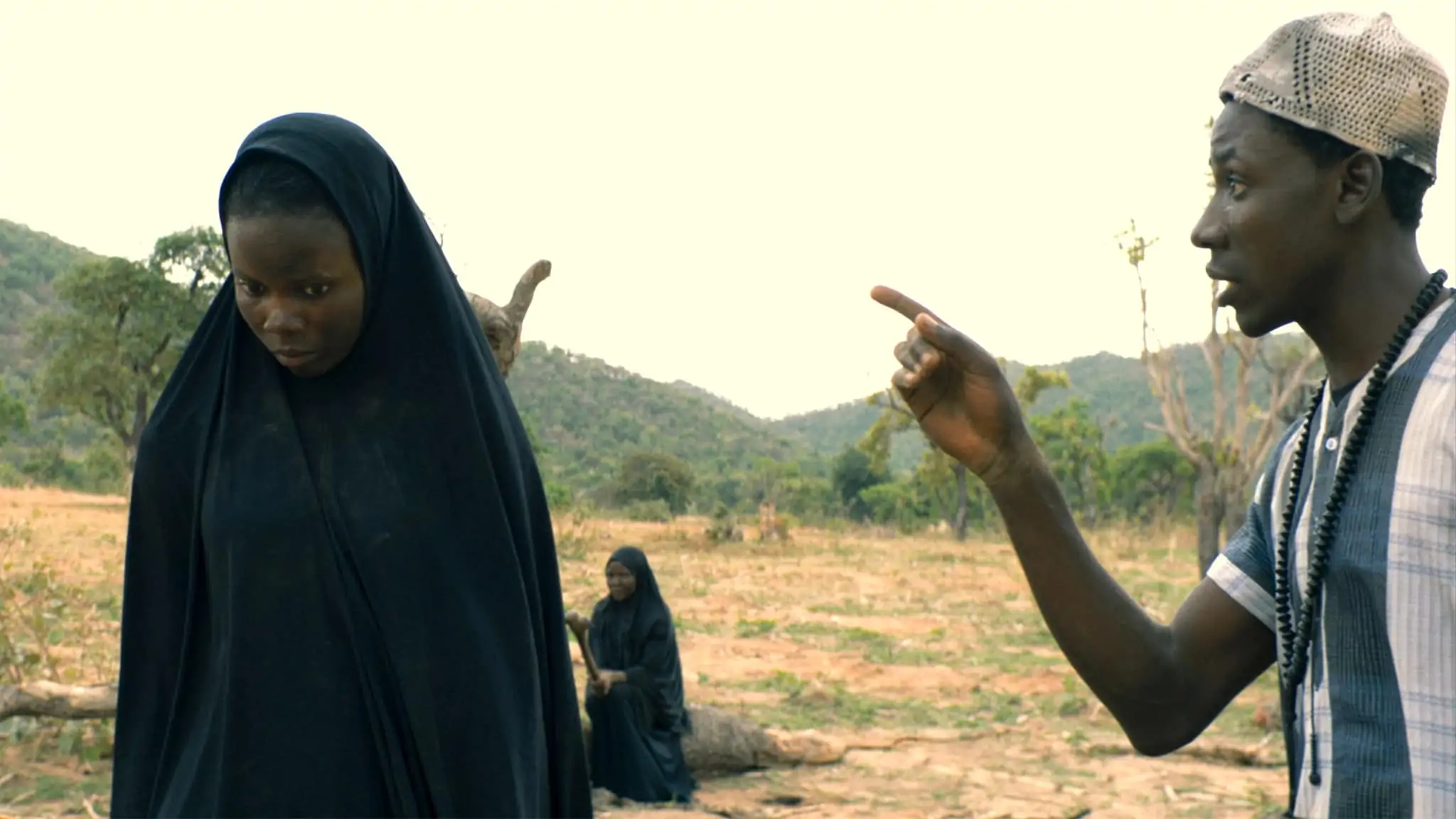
Did you work with any LUT is and how did you determine the colour palletes?
Since the film is divided into two parts – the part before the militants invaded the village and the part after the sisters are captured – we decided to work with colour palettes that would give us a distinction between these two segments of the film. We thought of the first part of the film being colourful and then the other parts as muted as possible. In fact, we took it a step further with the colour red in particular. I didn’t work with any LUT. Unfortunately, that was a luxury we could not afford.
What was your approach to lighting and how did you work with your gaffer to achieve a desired results?
The gaffer was Francis Ouma whom I’ve worked with for a few years now. Not only is he very experienced but he is a perfect gentleman with a very amiable personality and always ready to help. For this film the most important thing for us was that we wanted to be in total control of all the light sources for the interior scenes so as to make it easy for us to control the contrast. In order to achieve this we had to tent all the houses we were shooting in. Francis made these huge tents depending on the size of the building and he would run it around the entire house. It was quite difficult because we didn’t have the manpower. What made it more challenging was that sometimes we had to take this down and put it up the next day, because people were living in these houses. Francis and Haruna Sadu (the key grip) – another fantastic guy – would just make it happen. The other challenge was that the houses we were filming in had very low ceilings, so we pulled out the ceilings of the houses so we could put up a soft source above.
The big night scenes were particularly challenging, but Frances always had a plan. The biggest lamp we had was one 6K Fresnel and a few 4ks, but he made it work. I asked if we could take the lamps high-up and there were no cherry pickers in Taraba state where we were filming or anything that we could use to lift the lamps. Again Frances went to the local market and bought pipes which he used to build scaffolding that was about 24 feet high and that was massively helpful. With that we were able to create the moonlight for the night exteriors. We also had very small LED lights which we used just to highlight faces so that we could see the features of the faces when shooting.
We also had little to no prep time at all for this film. Yes, we had seen pictures but from my experience pictures are never the true representation of locations. I need to physically be there to make certain decisions but on this film that was not going to be possible, because of where the locations were. We had to hit the ground running.

What did the rigs comprise of and why was that equipment chosen? How did you make use of natural light for certain scenes? How did you incorporate practical light? Which was the most difficult scene to light?
One thing I quickly realised based on conversations I had with Desmond was that I needed to be in total control of the contrast of the film. If you know Nigeria, this can be very challenging, especially when you are on real locations. Because Nigeria is quite close to the equator, the sun is up quite early and it sets quickly. You have 12 hours of daylight and 12 hours of night and that’s it all year round. When the sun is up, it can be quite hot. So Francis the gaffer had to tent the houses we were shooting in. Every single location we shot in, we had to tent. This gave us the kind of control we needed. It was a very challenging approach, but I am glad we did this because many times the tents would have to come down and then go up again, but we just had to do it. It was lots of work for the crew also, because we worked with a small crew, but I’m glad we were able to do it.
What were you trying to achieve in the grade and how did you work with your colourist?
We graded the film at Twickenham Studios. René Taylor, the head of post-production at Twickenham, graciously accommodated me and the film. I worked with colourist Tom Cairns. With this film we didn’t want to make it look traditionally pretty – except of course at the beginning when their lives were still good – but we wanted to make the most of some of the stunning locations at our disposal. After the beginning I asked Tom to dirty the images as much as possible. We had a lot of fun with that, pulling back on a lot of the colours, keeping really strong shadows, and selectively adding some film grain. We allowed ourselves lots of time to experiment to find the looks to suit the varying locations and time periods. I think we landed on something that felt really right and aided the storytelling without being too overbearing. Tom’s patience through the process was immense.
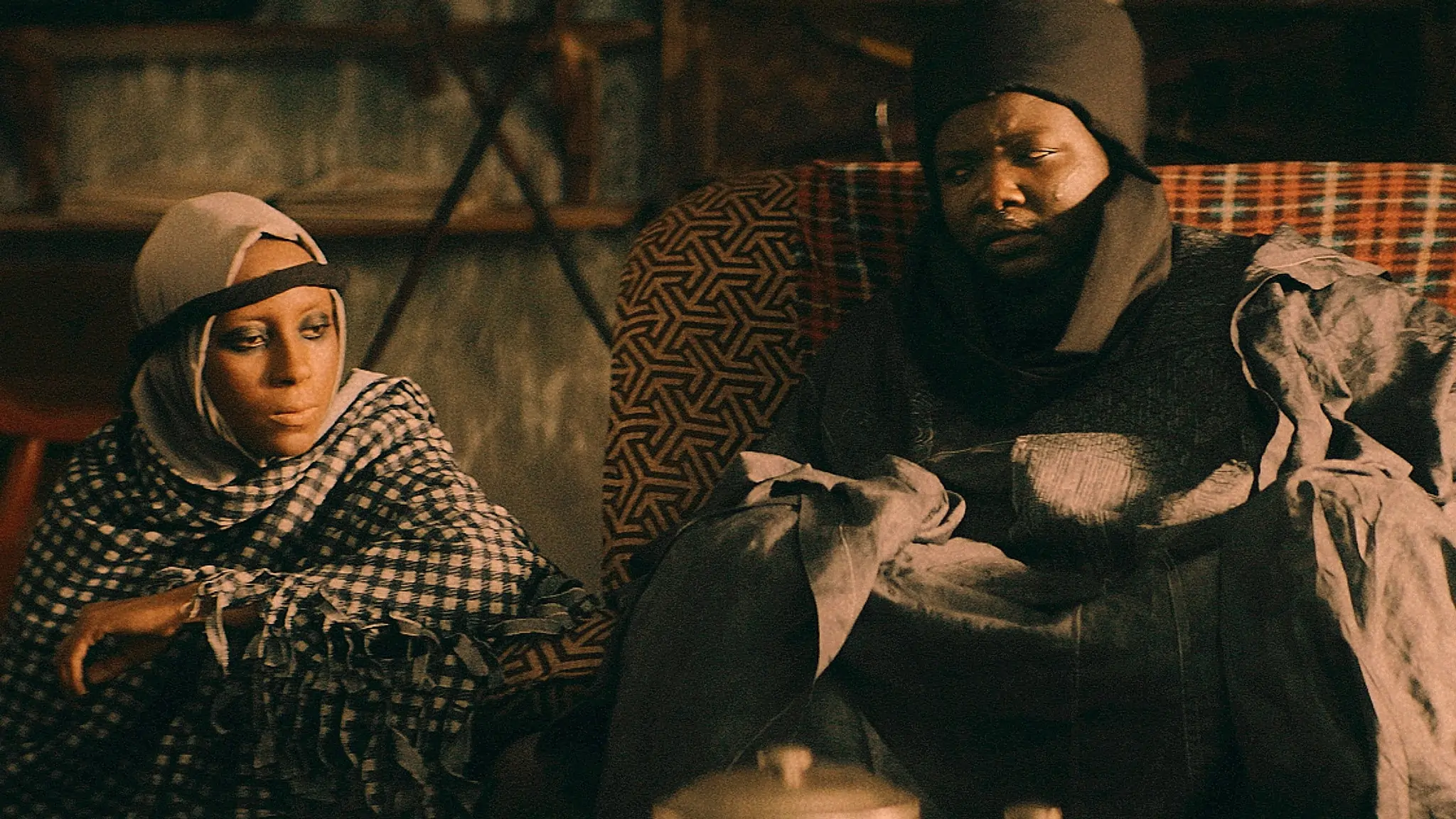
Which elements of the film were most challenging to shoot and how did you overcome those obstacles?
We had quite a number of challenging scenes during the shoot, but my favourite would be the well. The well was made out of fabrics and it was hanging about 20 feet above the ground with a platform on top for the actors to stand on. Lighting it was fun for the night scenes. Francis built a tower which was about 25 feet high and on top of the tower we rigged the lamps and the bounce boards, which was used to light the well. It’s one of those things you read on the screen and you’re wondering how this is going to be done, so when we did it, I was particularly pleased.
Are there any other key members of the crew you collaborated closely with?
I am really full of praise for the entire crew on this shoot because we all had to work in challenging situations, locations and terrain to make the film. Key grip Haruna, who I have always worked with in Nigeria, had to use the old Tulip crane which was the only crane you could find in Nigeria at that time. Haruna worked tirelessly to make sure everything was available when I needed them. There were scaffolding to be built, lots of tenting to be done, pipes to be rigged and they just worked tirelessly to get things done. Focus puller Andre travelled from the UK with me. In Nigeria you don’t have many focus pullers who are experienced with anamorphic lenses, so Andre’s expertise was a valuable contribution to the team. There were others such as Gideon, Peter, Stanley, Ebuka, Manji, and Jumafor who were quite tenacious while on set. Some of the areas we were in were quite rural and did not have the type of facilities you would find in an urban area, yet the entire team worked with continued enthusiasm and determination every day. I am really happy with what we were able to achieve as a team.
What lessons did you learn from this production you will take with you onto future productions?
I feel like every time you shoot in a place that has some of the peculiarities that Nigeria has you just build a sense of resolve. It makes you tougher. It makes you adaptable. You train your mind to never give up. You learn it is always possible and if you set your mind to it, you can do it. I think it just becomes a part of your lifestyle. You have films where things are easy, and you have all the toys you want to play with in terms of equipment. But when you work on such productions, and you are forced to create everything you become super creative. So it was good in that sense.


